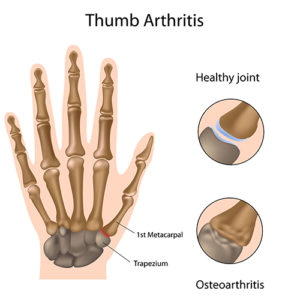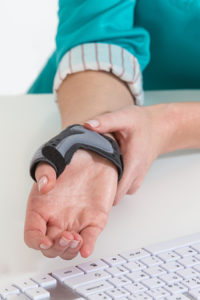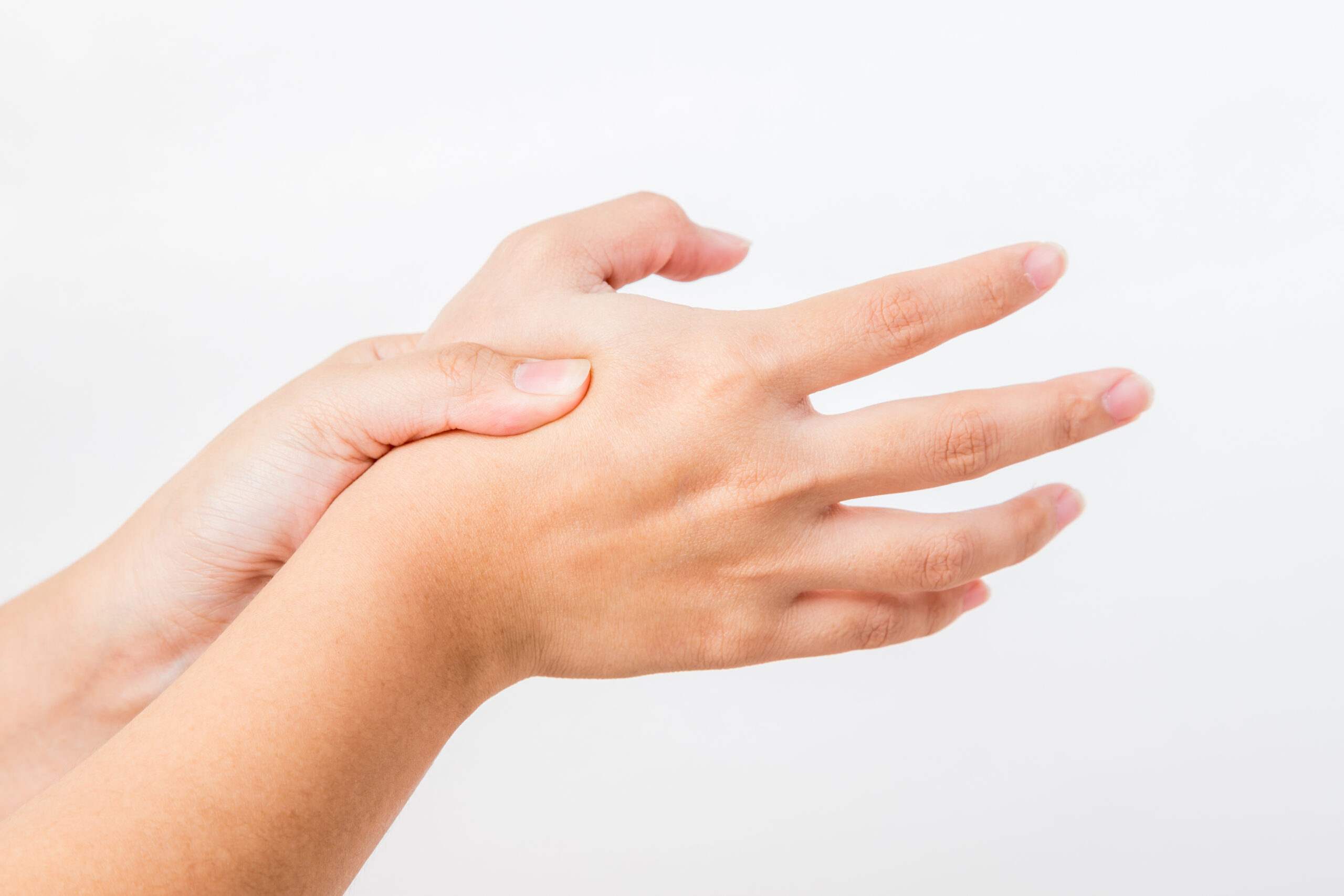The hands are one of the most common sites on the body for arthritis. And, when it comes to arthritis of the hands, thumb arthritis may be the most debilitating.
 Arthritis is an umbrella term for a large number of conditions that cause joint pain. The most common type that affects the thumb—and the most common type in general—is osteoarthritis, also known as wear-and-tear arthritis.
Arthritis is an umbrella term for a large number of conditions that cause joint pain. The most common type that affects the thumb—and the most common type in general—is osteoarthritis, also known as wear-and-tear arthritis.
Osteoarthritis is the degeneration of the cartilage at the ends of bones that allow them to glide smoothly together in a joint. Known as articular cartilage, when it is worn away enough, the joint has painful bone-on-bone contact every time it moves. The basal joint—the base of the thumb—is affected more often than the other thumb joints.
Who Gets Thumb Arthritis?
Arthritis of the thumb basal joint is very common. The base of the thumb is the second most common site for arthritis of the hand; only the knuckles out near the tips of the fingers are affected more often.
Women are about three times as likely to get thumb arthritis as men, but not all of these cases will have symptoms. Women have thumb arthritis symptoms 10 to 15 times more often than men. Thumb arthritis usually begins after age 40, and previous injury to the thumb increases the risk of developing thumb arthritis.
Detecting Thumb Arthritis
Symptoms
How do you know if you have thumb arthritis? What does it feel like? Pain at the base of the thumb on the palm side may be the most obvious sign, but it is far from the only one. Look out for these additional signs if you think you may have thumb arthritis:
- Pain or weakness with a grasping, twisting or pinching motion
- Swelling and tenderness at the base of the thumb
- A visual deformity of the joint
- Limited range of motion of the thumb
Diagnosis
If your symptoms are consistent with thumb osteoarthritis, the next step is to have it properly diagnosed, which is relatively straightforward. Your physician or other qualified healthcare professional will ask you questions about your medical history and any injuries to the thumb you may have had.
One thumb arthritis test that many healthcare professionals perform involves holding the base of the thumb and moving the digit around. If the patient complains of pain, or if the movement produces a grinding sound, which is known as crepitus, thumb osteoarthritis is likely.
An imaging study such as an X-ray can help your doctor confirm the diagnosis. The bone-on-bone grinding of end-stage osteoarthritis produces small growths on the bones called bone spurs or osteophytes. These bone spurs will also show up on an X-ray and support the diagnosis of osteoarthritis.
Treatment
 Arthritis cannot be cured, but its symptoms can be managed and controlled. Treatment may include:
Arthritis cannot be cured, but its symptoms can be managed and controlled. Treatment may include:
- Thumb arthritis splint or brace
- Cortisone to relieve pain and inflammation
- Hand therapy to increase function and range of motion
- Joint replacement for especially damaged thumb joints
If you are troubled by pain at the base of the thumb and suspect you may have thumb arthritis, request an appointment with Dr. Jacobson. He can give you a diagnosis and take steps to managing your symptoms.

